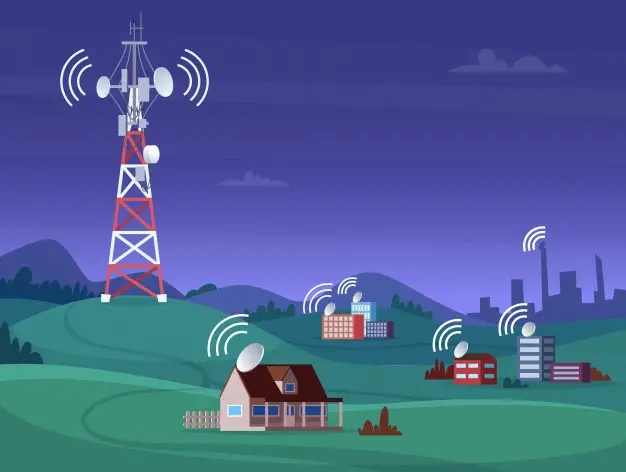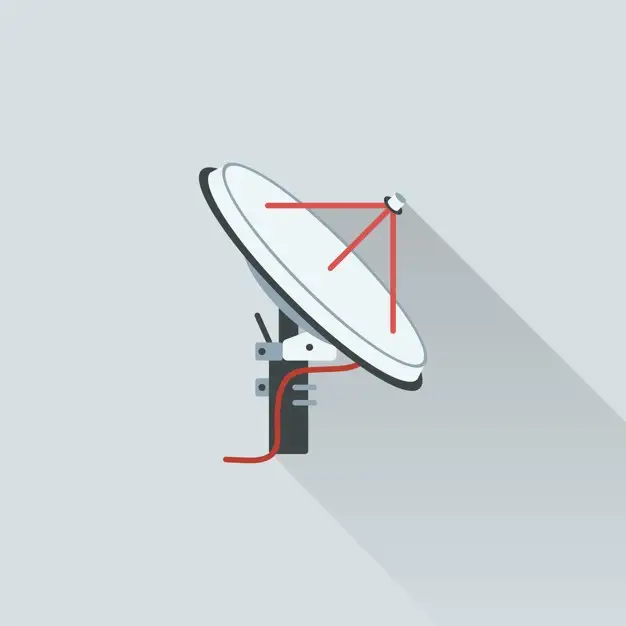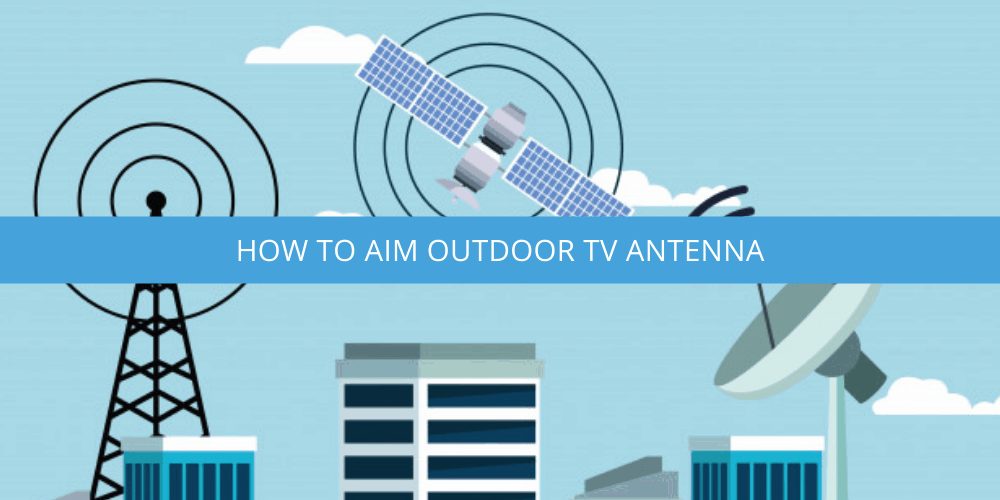Antennas are naturally engineered to receive and transmit signals from different directions. However, it does give them a significant boost if placed in an optimum position and aimed in a specific direction.
Knowing how to aim an outdoor TV antenna correctly will ensure good performance, less interference, and static.
At the time of installation, antennas, especially those used for television reception, need to be aimed, pointed, or oriented toward a television transmitter, if you want the best signals.
Since antennas follow a polar diagram or directional pattern, the direction can significantly improve connectivity.
We will cover the following steps for aiming for an outdoor tv antenna in our article in more detail:
- Determine the direction of the TV towers: You will need to know the direction of the TV towers to aim your antenna correctly. You can use a TV antenna map or a tool such as antennaweb.org to find the direction of the towers.
- Turn off your TV and unplug it: This will help prevent any electrical interference during the aiming process.
- Aim the antenna: Rotate the antenna to face the direction of the TV towers. You may need to adjust the angle of the antenna as well.
- Plug in your TV and turn it on: Turn it on and scan for channels. This will allow your TV to find all the available channels in your area.
- Fine-tune the antenna: If you are not getting all the channels you expect, try adjusting the antenna slightly to see if you can improve the signal. You may need to experiment with different angles and positions to find the optimal setting.
- Secure the antenna: Once you have the antenna aimed correctly, ensure it is securely fastened to prevent it from moving or shifting.

Ways Of Aiming An Antenna
Visual Alignment
This is one of the main and easiest methods to try for aiming an outdoor TV antenna.
Try to point it in the direction of the television transmitter mast while dealing with the TV antenna.
It is often possible to aim the antenna with other similar antennas, like a neighbour’s antenna, and it would only work if the TV transmitter masts were visible. However, these results are strictly dependent on the signal strengths of different homes as they tend to vary from one to another.
The aim that works for one may not work for another house. (1)
Signal Strength Meter
There are quite a few cheap single options available in the market that can be used.
Signal strength meters or alignment meters are easy to figure out and can help you aim the antenna if you have access to the cable connected to the meter.
The workings of a TV antenna are quite basic and only measures the strength of the signals across a TV band.
A signal strength meter picks up simple analog RF signals and signals the same through a set of blinking LEDs.
This will allow you to aim the antenna wherever the signal is the strongest. However, be careful since, due to the device’s simplicity, they can also pick up interference from their wide band and potentially give off a false reading. But, if you know your area well and with a bit of intuition, chances are the process will be done right.
You may want to check this learning guide on how to get better TV reception with an outdoor antenna.

Smartphone App For Antenna Aim
Many apps help you locate the strongest signal strength, thereby helping you aim your TV antenna. Android and iOS both contain a good variety.
Usually, they will display a list of different television sets set up with transmitting antennas with their exact location listed; the app will then use this data and the phone’s orientation capabilities to prove the orientation or direction of the various transmitters.
After scanning, a list of close and probable locations will be displayed with the strongest signals for you to aim the antenna that way. (2)
This method could be a little hit or miss, especially since the television transmitter mast cannot be seen. Due to this, the signal could bounce off hills, buildings, or other interfering things.
Try a couple of options, narrow down the options per your knowledge of the area, and choose the direction that seems to be recurring. 
Things To Keep In Mind
- If you live in an area some distance away from a cluster of broadcast towers, you should consider buying a unidirectional antenna and installing it in that direction. The arrangement will work well, considering these antennas are powerful and built to pick up signals from one direction. They can chew down on interference quite effectively.
- Usually, in many places, one broadcast tower will be up west, another up south, and so on. Omnidirectional antennas will be the best choice here. While they are less powerful, they are built to pick up signals from every direction.
- Some advanced televisions may come with internal signal meters to help you locate the strongest signal aim, but they might not be that reliable. People have often reported experiencing difficulties and false readings. If you also face such troubles, it is wise to use an external antenna alignment meter. It will help you aim the antenna as well as figure out if there have been any changes to signal strength as well.
- Markets are replete with different types of antenna cables. Since signals travel through the cables, it is always better to buy good quality ones to minimize signal loss.
- The aim is important, but a TV antenna’s placement is just as crucial. Local terrain, surrounding interference, and trees must be considered before deciding on the aim. Even if you know how to aim the antenna, it would not matter if there are a lot of obstacles in the path.
Another useful learning guide is checking the direction to point outdoor TV antenna.
Final Words
You are now well-equipped to aim your outdoor TV antenna. If there is a spotty connection, don’t forget to adjust your antenna again, as many changes in the landscape may warrant a different direction.
References(1) Visual Alignment – https://balsamiq.com/learn/articles/visual-hierarchy-and-alignment/(2) Android and iOS – https://www.pcmag.com/comparisons/android-vs-ios-which-mobile-os-is-best

